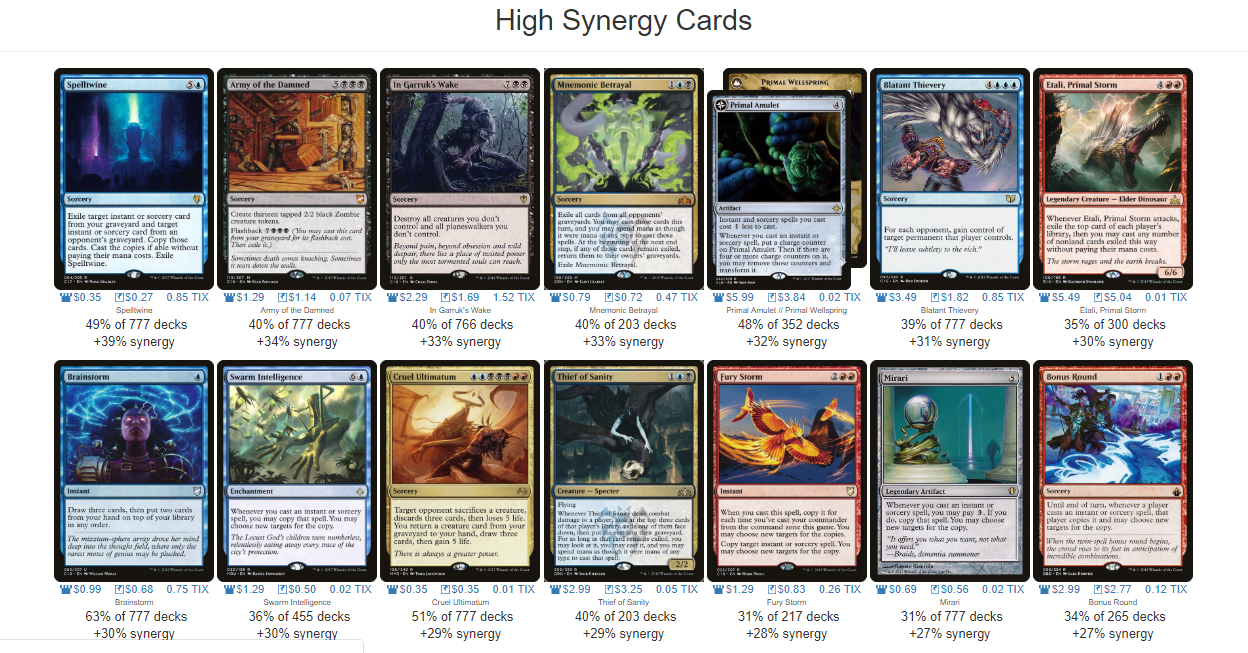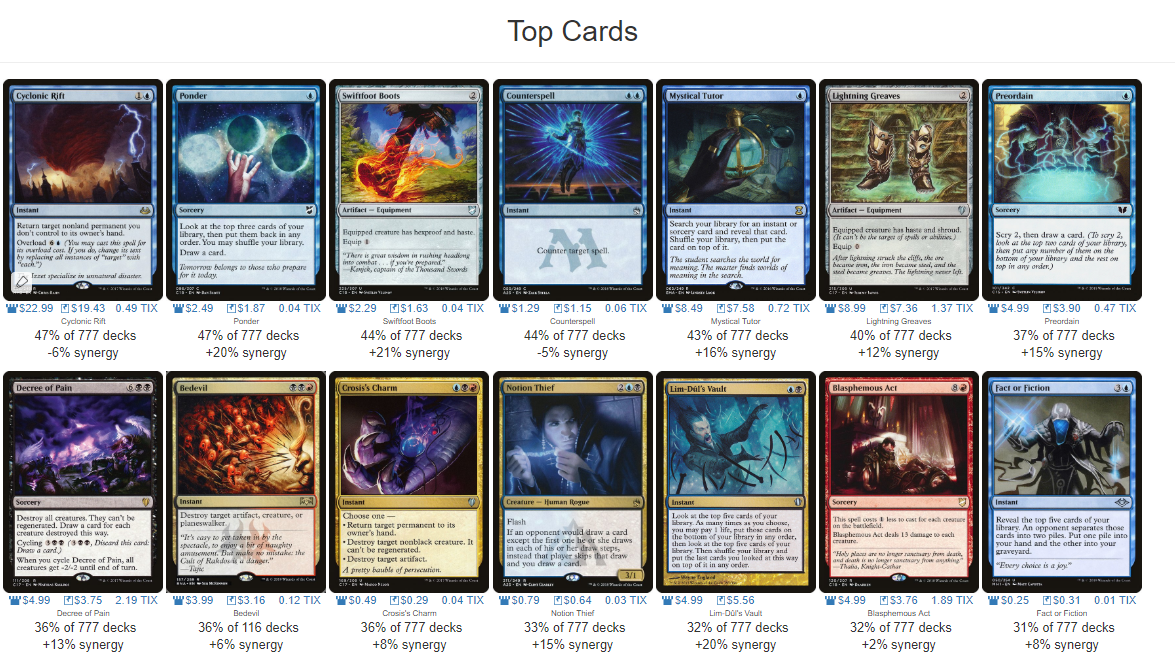Epic Experiment - Jeleva Voltron

(Jeleva, Nephalia's Scourge | Art by Cynthia Sheppard)
Epic Preparations
Hello EDHREC! I’m Bernardo Melibeu and this is Epic Experiment, a series where we throw all common sense aside and experiment with some unusual strategies, changing how we normally build our deck. Is it going to work? Who knows?! We’re making science here. When you’re an Izzet mage, blowing things up is half the fun.
In this article we're going to explore one very competitively focused commander, known for her ability to provide both card advantage and the ability to cheat mana costs: we're talking about Jeleva, Nephalia's Scourge.
Flying
When Jeleva, Nephalia’s Scourge enters the battlefield, each player exiles the top X cards of their library, where X is the amount of mana spent to cast Jeleva.
Whenever Jeleva attacks, you may cast an instant or sorcery card exiled with it without paying its mana cost.
Observation 1:
To consistently benefit from her second trigger, we need a deck with a high number of instants and sorceries. It's true that we can use our opponents' spells, but we can't rely on what we might reveal from their decks.
Observation 2:
In a way, Jeleva can emulate Narset, Enlightened Master by chaining extra turn spells. This isn't infinite, but it can put us so far ahead that it might not matter.
Observation 3:
Although it looks like she wants top-deck manipulation, it's kind of hard to set it up since we need to cast a spell or use an ability to manipulate our library and then cast Jeleva shortly afterward.
Observation 4:
Counterspells are a bit of a nonbo here.
Observation 5:
Jeleva scales as the game goes, but if she's removed too early, we might lose some crucial spells.
The Old Formula
Let’s see how folks usually build Jeleva:
As we can see, big spells are the name of the game. We have multiple splashy effects to cheat out with Jeleva, plus a few ways to support them. What's fun about this section in particular is how both lists don't seem to match; on one hand we have explosive cards with big effects, but on the other, we have reactive cards, full of counterspells and board wipes. This just shows us that the average deck prefers to be more on the controlling side, using Jeleva as a way to get card advantage.
The Epic Ingredients
The inspiration for this deck came from a new card from Modern Horizons: Fists of Flame. This is an amazing spell for decks that draw lots of cards, but it's even better if we have ways to copy it. Jeleva, Nephalia's Scourge has the ability to grab a bunch of combat-related spells, which may include extra combat phases, and chain them together to get bigger with every hit.
For pump effects, we have a few fun inclusions. Hatred is a very powerful one-shot tool for both Voltron and non-Voltron commanders alike. In this deck, the card is more powerful because we have ways to copy it, not to mention our ability to generate extra combat phases! Tainted Strike is very similar to Hatred, but it needs a little extra support. Psychotic Fury is an efficient cantrip that gives our commander double strike. Finally, there's Rush of Blood which will double Jeleva's power. That one requires some setup, but the payoff more than makes up for the opportunity cost. The rest of the pumps varies between haste enablers, protection, and straight-up power boosts.
To support this strategy we're running a ton of extra combat steps and extra turn spells. This will lead us to a chain of attacks all in a row, which can be frowned upon, but hey, we're playing a 1/3 as a Voltron commander! For extra combat, we have Fury of the Horde, Relentless Assault, Seize the Day, and World at War. They all work similarly, providing extra combat steps, which allow Jeleva to chain through more spells and pump herself even higher! Extra turn spells can also help with this; they're a lot less explosive, but have the added benefit of accelerating board-state development, which can be crucial in a slow-ish Voltron deck.
For our non-instants/sorceries, we have a few cards that can help us get through longer games. Leering Emblem acts as a double Prowess trigger, which gets crazy with the extra combat steps. Strionic Resonator pulls double duty as it doubles both Jeleva's ETB and attack triggers. This is recommended for those longer games where we would need to cast her again and again. Aria of Flame is a recent addition to the format, and a welcome addition to this deck. This card allows us to interact with other players, which gives us reach and effectively cuts down the amount of commander damage we need to deal to the whole table.
The Mixture
Jeleva Voltron
View on ArchidektMethodology
This deck can be very explosive, but it can also feel very underpowered at times. Knowing which hands to keep is a crucial skill to learn. Keepable hands usually contain at least two lands and a mana rock, the better to land a turn three Jeleva, or even a turn four Jeleva with haste if we can run out an enabler. Chaining through cantrips can also work for games that are expected to go long.
Once Jeleva is on the battlefield, we need to start thinking about the sequence of our spells; the order in which we play our spells can definitely matter and we'll be severely punished by misplays. This will vary from game to game, but I'll advise you to first engage in some "weak" attacks (without committing too much) just so that we don't raise alarms. From there, we can try do some real damage.
Mid-game we might start running out of gas, but lucky for us, our commander is a card advantage machine and can help us either on the battlefield or in the command zone. This is the stage where we can do the most damage, but it's also harder to keep her safe. Going slower isn't as much of a problem if we're having difficulties in keeping Jeleva alive, because we can always give her haste and start slingling spells right off the bat. The biggest problem, however, is when we're stuck with no Jeleva and a hand full of combat tricks.
For our late game, even single-target removal can slow us down considerably, and we won't have the cards to consistently pump Jeleva. That being said, if we ever cast her for 8 or more and untap with her, it's very likely that we'll able to finish someone off with all those awesome spells.
Epic Results
This was a hard one, but the result seems very fun to play. If you want to take this deck for a spin, you might consider some of the following adjustments:
Adding more draw with cards like Experimental Frenzy and/or wheel effects. This can help us climb our way back to a game with raw card advantage.
If your meta proves to be more control-heavy, it might be prudent to add some counterspells. If it has many fliers, more unblockability. If you want to be even more explosive, you could add Haze of Rage.
That’s it for this Epic Experiment! What do you think about this list? What do you think about this take on Voltron? Do you have any questions about the deck? Which cards did you like? Which didn’t you? Was the Epic Experiment a success? Please let me know in the comments below!


EDHREC Code of Conduct